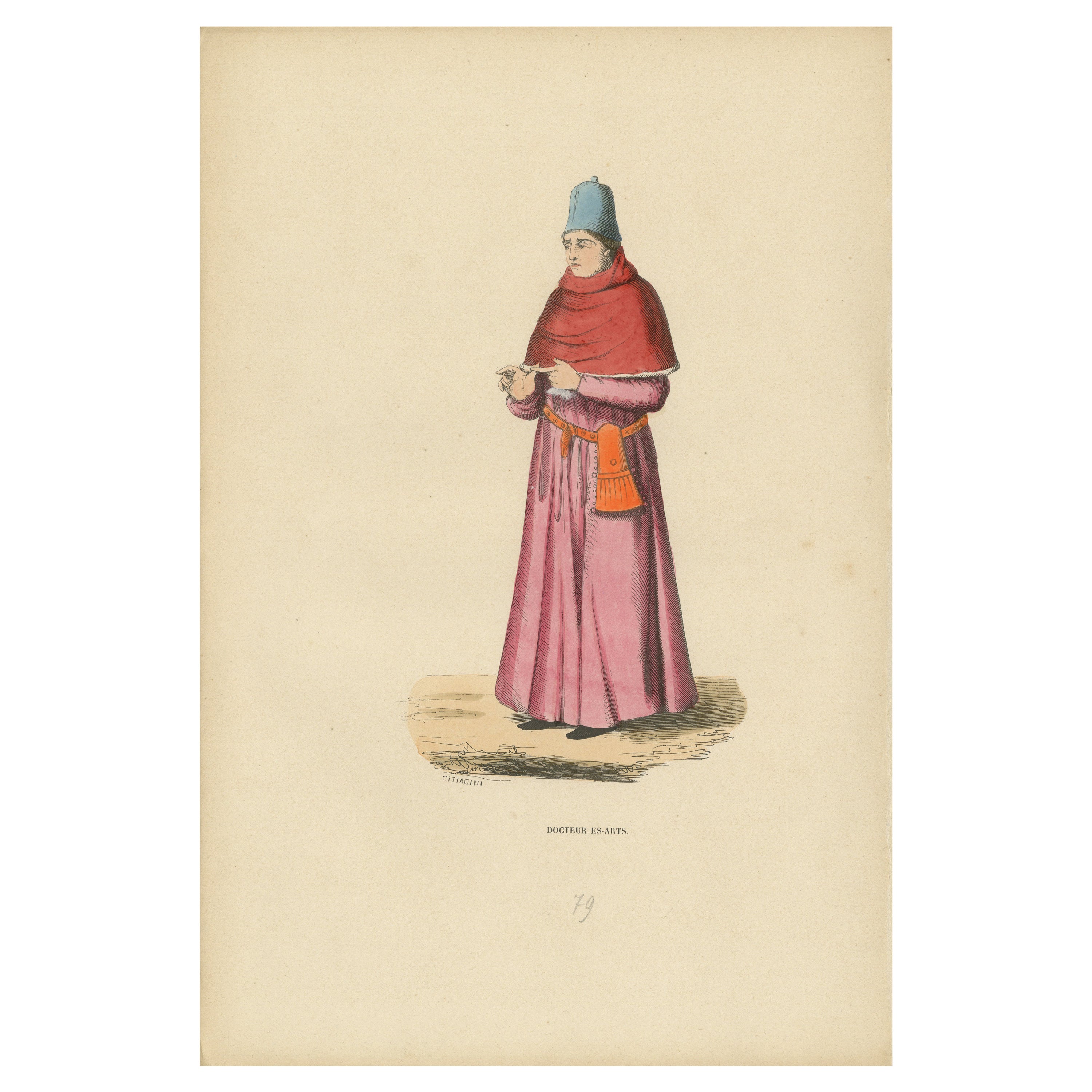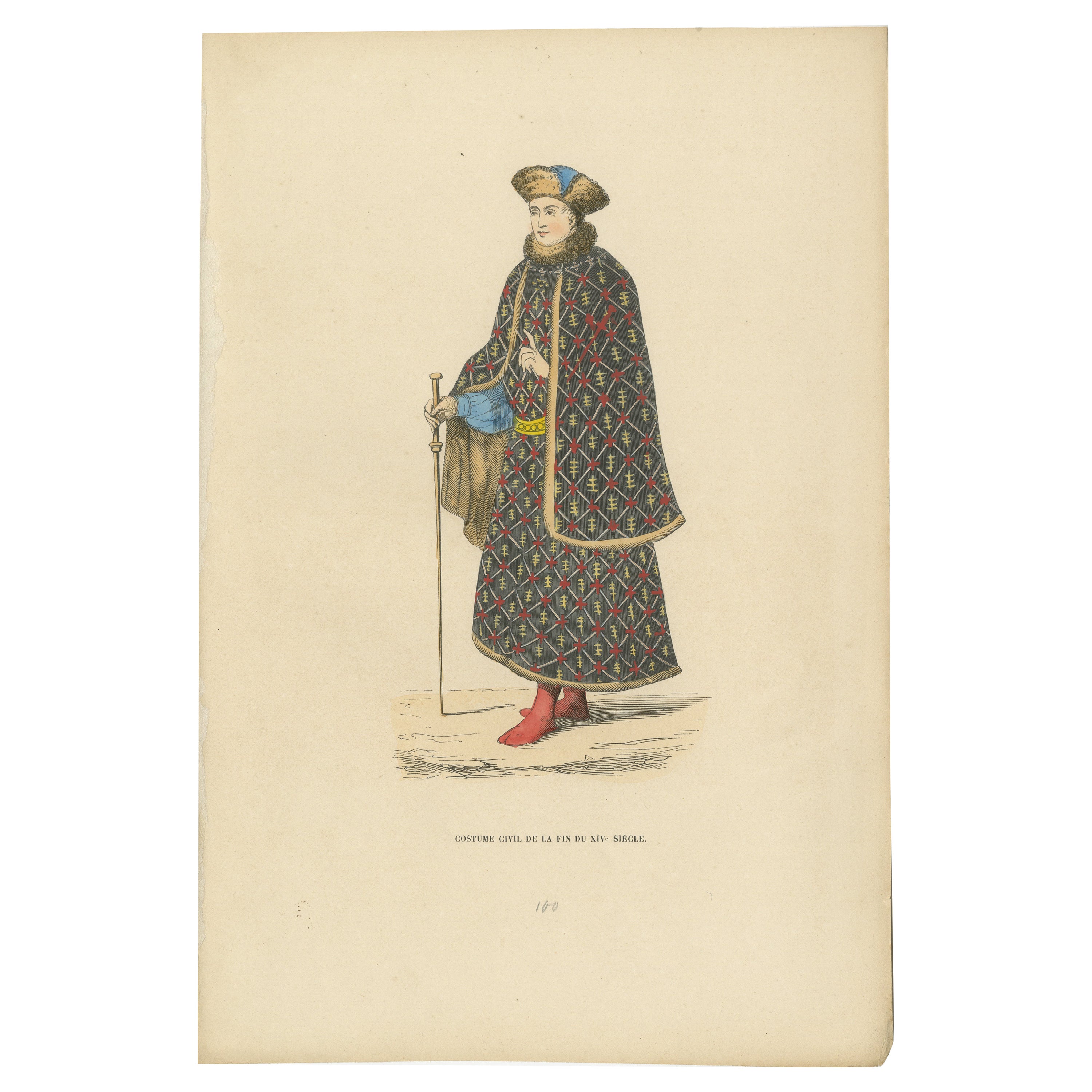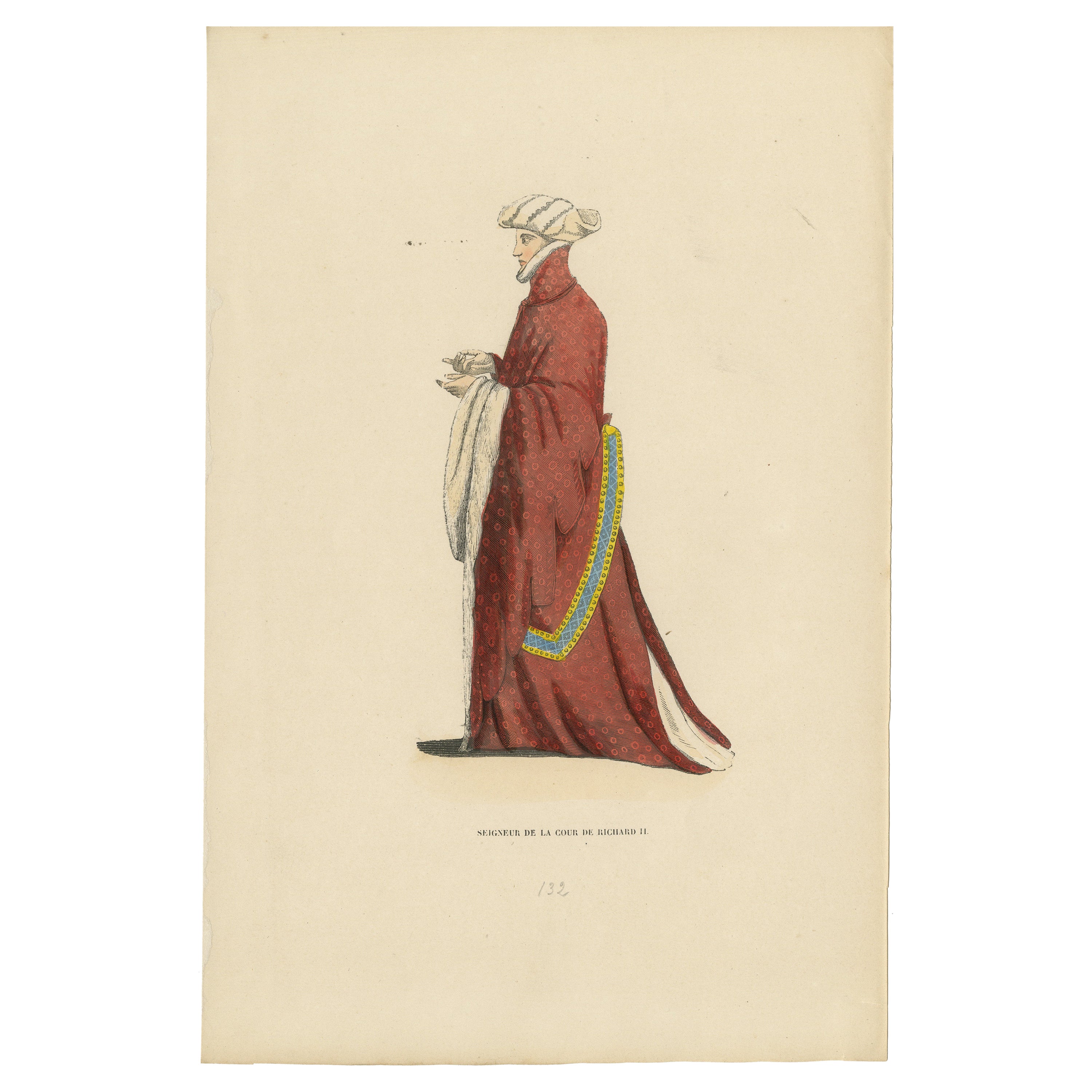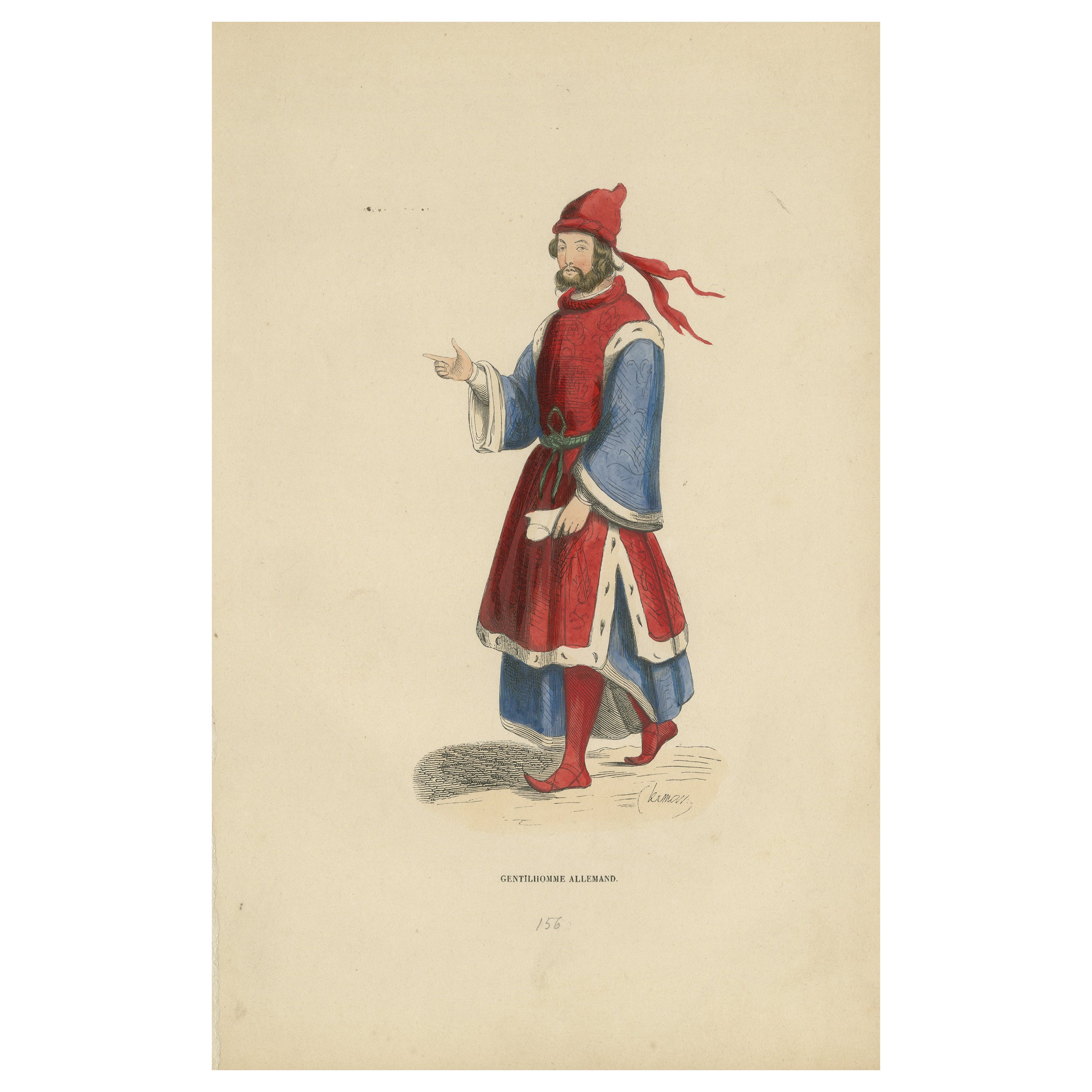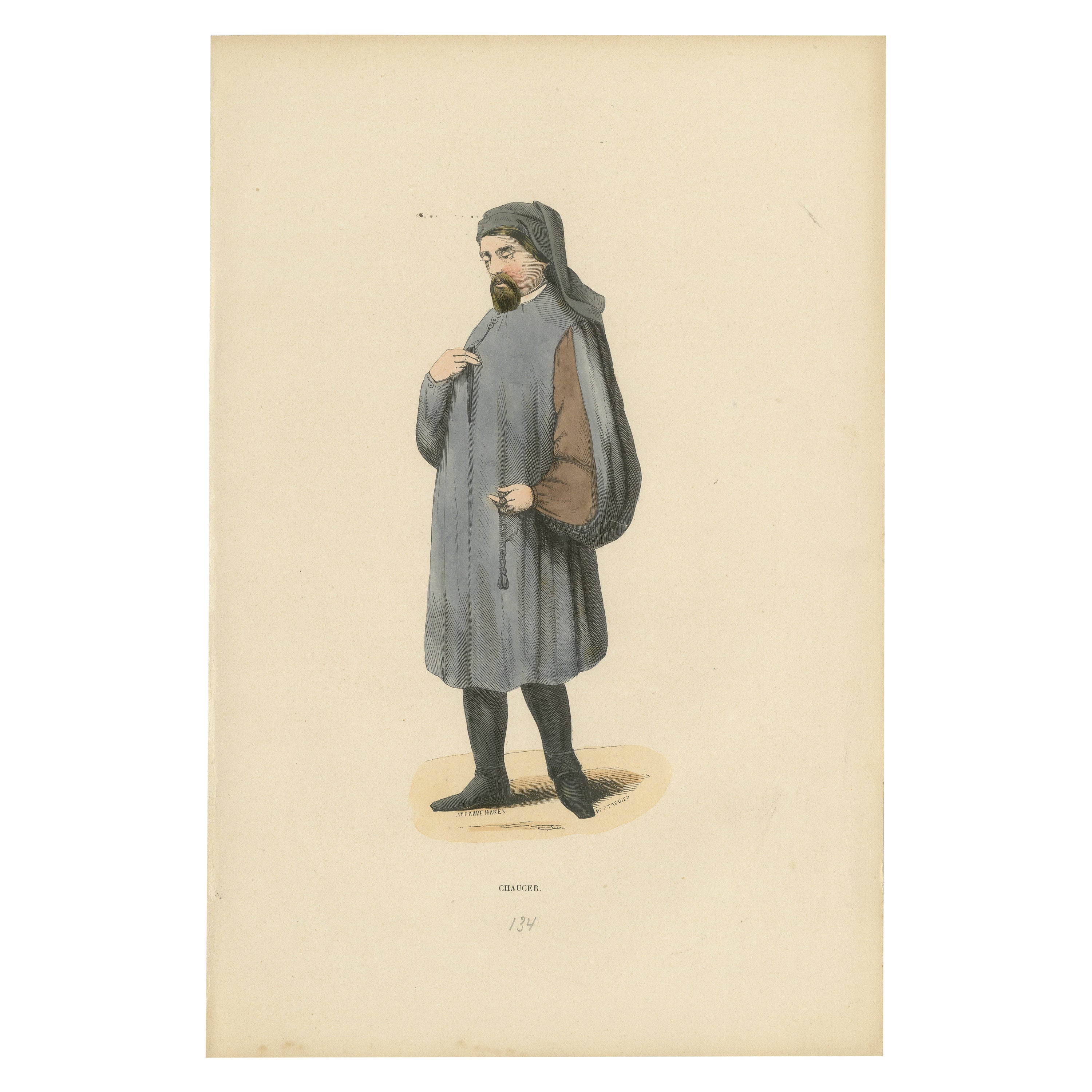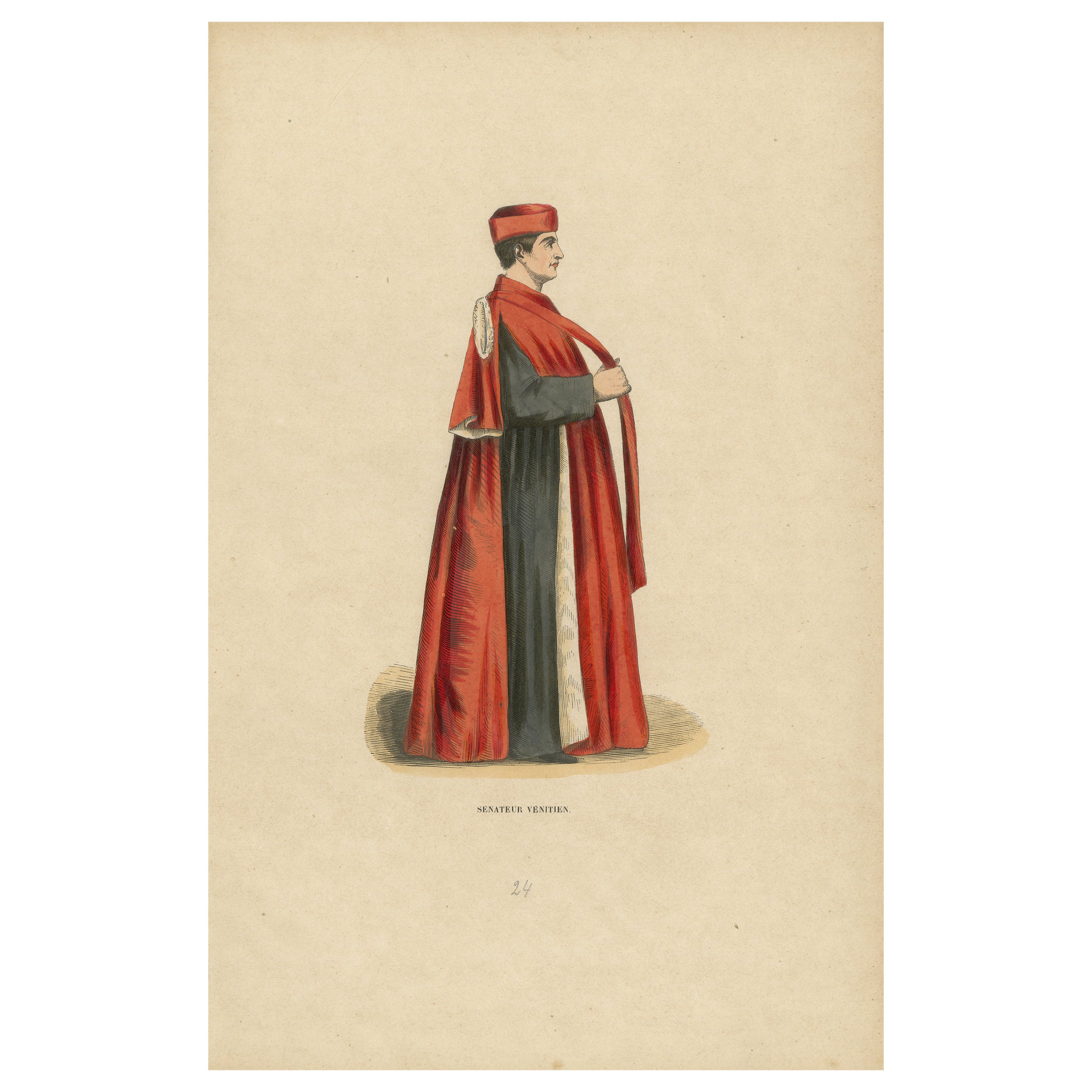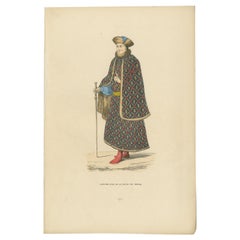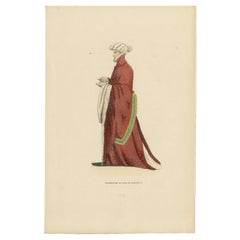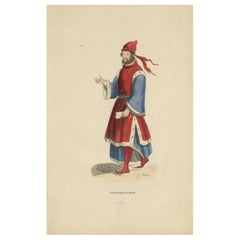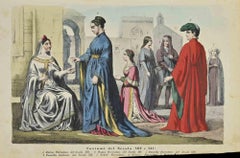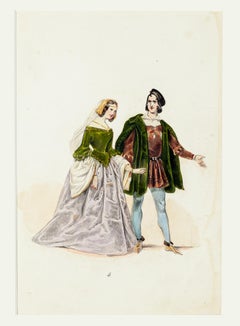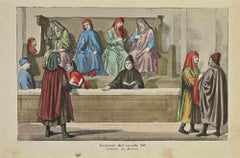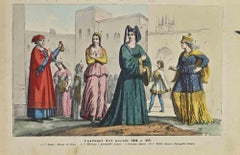Items Similar to Attire of a Medieval Scholar: The Learned Physician of the Middle Ages, 1847
Want more images or videos?
Request additional images or videos from the seller
1 of 6
Attire of a Medieval Scholar: The Learned Physician of the Middle Ages, 1847
$142.86
$178.5720% Off
£106.18
£132.7320% Off
€120
€15020% Off
CA$197.25
CA$246.5620% Off
A$218.73
A$273.4220% Off
CHF 114.93
CHF 143.6620% Off
MX$2,672.54
MX$3,340.6820% Off
NOK 1,437.90
NOK 1,797.3820% Off
SEK 1,349.72
SEK 1,687.1520% Off
DKK 913.74
DKK 1,142.1720% Off
About the Item
Title: "Attire of a Medieval Scholar: The Learned Physician of the Middle Ages"
This hand-colored lithograph, titled "Médecin" in the original French, is a detailed portrayal of a medieval physician's attire from the celebrated 1847 publication "Costume du moyen age d'après les manuscrits, les peintures et les monuments contemporains." The illustration captures the essence of a scholarly healer of the Middle Ages, emphasizing the significance of clothing as a marker of knowledge and status. Adorned in a vibrant red robe that reaches the ground, the physician's garment is both a sign of his professional role and a reflection of the period's fashion. The robe is complemented by a distinguished grey and black cloak, meticulously edged with a golden-yellow trim that signifies wealth and distinction. The cap he wears, red with a white band, suggests a customary headgear for men of medicine during the era.
The physician stands with a composed and thoughtful expression, holding what appears to be a small book or set of papers, perhaps indicative of his knowledge and readiness to offer counsel. The lithograph's hand coloring brings to life the textures and fabrics of the period, offering a window into the world of medieval customs and societal roles. This image is not only a visual record of historical attire but also a cultural symbol that conveys the reverence and gravitas attributed to medical professionals in a time when their expertise was both vital and revered.
The colors have a nice glow over them. Historically, egg whites, known as glair, and sometimes egg yolk were indeed used in illumination and painting, particularly in manuscripts, to give colors a brighter appearance and to add a sheen or gloss to the work. This technique was quite common during the Middle Ages and into the Renaissance.
Egg whites can be applied as a varnish over pigments to enhance their brightness and to protect the colors. This application could make the colors appear more vivid and also add a slight glossy sheen to the surface of the image.
Egg yolk, on the other hand, was commonly used as a binding agent in paint. It forms the basis of tempera paint, a medium that was widely used before the advent of oil painting. Egg yolk helps to create a durable and long-lasting color that adheres well to various surfaces.
In the context of the print from 1847, it's less likely that egg whites or yolks were used directly on the print, as by that time, commercial printing processes would have been more advanced and less reliant on such manual methods. However, if this print is a representation of an earlier style or is meant to mimic the appearance of hand-painted manuscripts, the original artists might have employed techniques or materials that gave a similar effect to those achieved with egg-based binders and varnishes.
- Dimensions:Height: 10.63 in (27 cm)Width: 7.09 in (18 cm)Depth: 0 in (0.02 mm)
- Materials and Techniques:
- Period:
- Date of Manufacture:1847
- Condition:Good. Overal light toning and light soiling but the image itself clean and hand-colored almost 200 years ago and still in expliciet colors. Aged paper with typically warm, yellowish-brown hue, mostly around the edges. Study the images carefully.
- Seller Location:Langweer, NL
- Reference Number:Seller: BG-13635-1011stDibs: LU3054337927262
About the Seller
5.0
Recognized Seller
These prestigious sellers are industry leaders and represent the highest echelon for item quality and design.
Platinum Seller
Premium sellers with a 4.7+ rating and 24-hour response times
Established in 2009
1stDibs seller since 2017
2,609 sales on 1stDibs
Typical response time: <1 hour
- ShippingRetrieving quote...Shipping from: Langweer, Netherlands
- Return Policy
Authenticity Guarantee
In the unlikely event there’s an issue with an item’s authenticity, contact us within 1 year for a full refund. DetailsMoney-Back Guarantee
If your item is not as described, is damaged in transit, or does not arrive, contact us within 7 days for a full refund. Details24-Hour Cancellation
You have a 24-hour grace period in which to reconsider your purchase, with no questions asked.Vetted Professional Sellers
Our world-class sellers must adhere to strict standards for service and quality, maintaining the integrity of our listings.Price-Match Guarantee
If you find that a seller listed the same item for a lower price elsewhere, we’ll match it.Trusted Global Delivery
Our best-in-class carrier network provides specialized shipping options worldwide, including custom delivery.More From This Seller
View AllScholar of the Arts: The Medieval Academic, 1847
Located in Langweer, NL
Title: "Scholar of the Arts: The Medieval Academic"
Description: This print illustrates a learned individual, likely a doctor of the arts or a scholar, from the medieval period. The...
Category
Antique 1840s Prints
Materials
Paper
$114 Sale Price
20% Off
Civilian Costume at the End of the 15th Century, 1847
Located in Langweer, NL
Title: "Civilian Costume at the End of the 15th Century"
Description: The image is a print from a series the "Costume du Moyen Age" dated 1847, and titled "Costume Civil de la Fin d...
Category
Antique 1840s Prints
Materials
Paper
$171 Sale Price
20% Off
Aristocratic Elegance: A Lord of Richard II's Court, Original Old Print of 1847
Located in Langweer, NL
Title: "Aristocratic Elegance: A Lord of Richard II's Court in 'Costume du Moyen Âge'"
Description: This lithograph from "Costume du Moyen Âge," dated 1847, presents a nobleman from...
Category
Antique 1840s Prints
Materials
Paper
$152 Sale Price
20% Off
Noble Bearing: A German Gentleman in Medieval Attire, 1847
Located in Langweer, NL
Title: "Noble Bearing: A German Gentleman in Medieval Attire from 'Costume du Moyen Âge'"
Description: This 1847 lithograph from the esteemed collection "Costume du Moyen Âge" showc...
Category
Antique 1840s Prints
Materials
Paper
$171 Sale Price
20% Off
Medieval Sobriety: A Scholarly Figure in 'Costume du Moyen Âge, 1847
Located in Langweer, NL
Title: "Medieval Sobriety: A Scholarly Figure in 'Costume du Moyen Âge'"
Description: This lithograph from "Costume du Moyen Âge," published in 1847, portrays a scholarly figure, po...
Category
Antique 1840s Prints
Materials
Paper
$142 Sale Price
20% Off
In Council and Commerce: A Venetian Senator in Robes of Office, 1847
Located in Langweer, NL
The image portrays a figure labeled "Sénateur Vénitien," which translates to "Venetian Senator." The Venetian senator is shown in a profile view, wearing traditional senatorial robes...
Category
Antique 1840s Prints
Materials
Paper
$152 Sale Price
20% Off
You May Also Like
Costumes of the 13th and 14th centuries - Lithograph - 1862
Located in Roma, IT
Costumes of the 13th and 14th centuries is a lithograph on paper realized in 1862.
The artwork belongs to the Suite Uses and customs of all the peoples of the universe: " History of...
Category
1860s Modern Figurative Prints
Materials
Lithograph
Ancient Costume - Original Lithograph - Mid 19th Century
Located in Roma, IT
Ancient Costume is an original lithograph hand-colored, realized by an anonymous artist of the XIX century
The state of preservation of the artwork is...
Category
Mid-19th Century Figurative Prints
Materials
Lithograph
Costumes of the 14th centuries - Lithograph - 1862
Located in Roma, IT
Costumes of the 14th centuries is a lithograph on paper realized in 1862.
The artwork belongs to the Suite Uses and customs of all the peoples of the universe: " History of the gove...
Category
1860s Modern Figurative Prints
Materials
Lithograph
Costumes of the 13th and 14th Centuries - Lithograph - 1862
Located in Roma, IT
Costumes of the 13th and 14th centuries is a lithograph on paper realized in 1862.
The artwork belongs to the Suite Uses and customs of all the peoples of the universe: " History of...
Category
1860s Modern Figurative Prints
Materials
Lithograph
Costume - Hand-colored Lithograph - 19th Century
Located in Roma, IT
Costume is original Hand-colored lithography realized by an Anonymous artist in the late XIX century.
Included a Passepartout: 52.5 x 37cm.
Very good conditions.
The artwork represents the traditional costume by light and bright colors, skillfully depicted through soft and precise strokes, the artwork is created with congruous harmonious colors from historical costume...
Category
19th Century Figurative Prints
Materials
Lithograph
Italian Costumes of the 13th and 14th Centuries - Lithograph - 1862
Located in Roma, IT
Italian Costumes of the 13th and 14th Centuries is a lithograph on paper realized in 1862.
The artwork belongs to the Suite Uses and customs of all the peoples of the universe: " H...
Category
1860s Modern Figurative Prints
Materials
Lithograph
More Ways To Browse
Medical Sign
Antique Silver Boxes Repousse
Antique Storm Glass
Antique Thimbles
Antique Victorian Grandfather Clock
Antique Wooden Swan
Art Deco Bed Frame Queen
Art Deco Buffet Mirror
Art Deco Desk Statue
Art Deco Full Bed
Art Deco Glass Shelving
Astronomical Clock
Baker Dining Buffet
Baker Neoclassical Dining
Baker New World Collection
Baroque Headboard
Bear Bookends
Bi Discs
